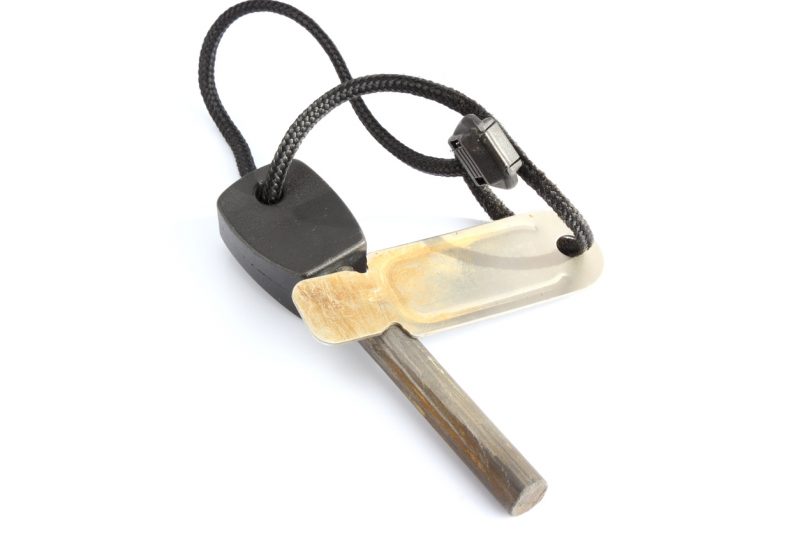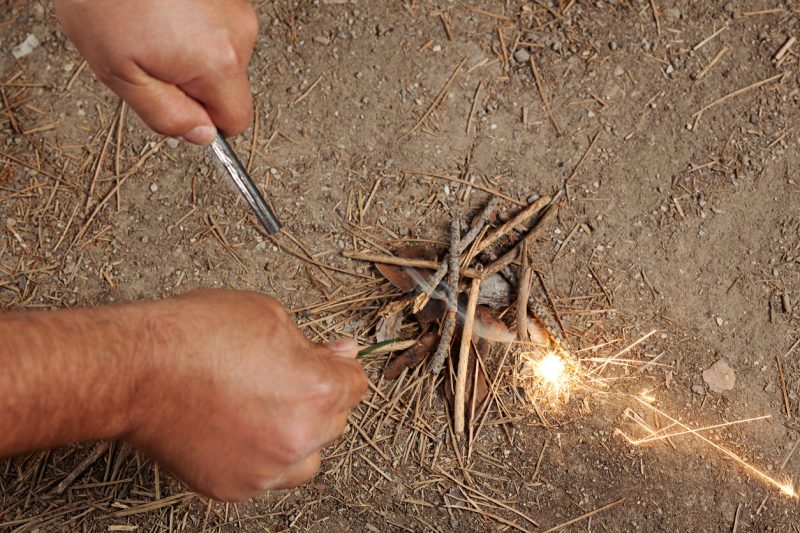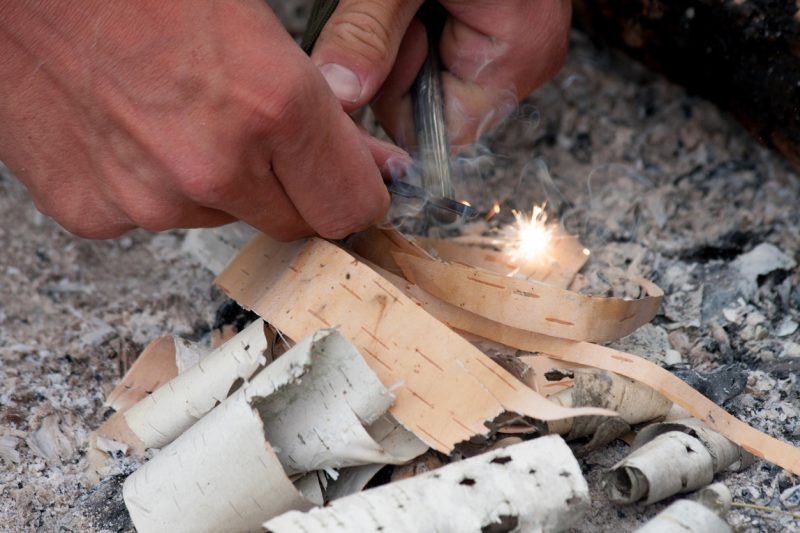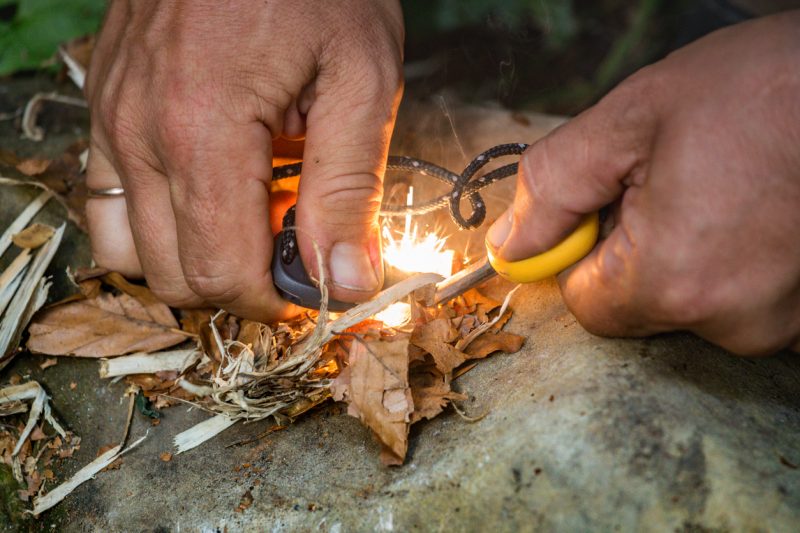How to Start a Fire With Flint and Steel
Knowing how to start a fire is an invaluable skill for any outdoors enthusiast. It becomes even more vital during a potential survival situation.
Most seasoned outdoorsmen and women know the basics of how to start a fire, and with a little bit of practice, can create a proper campfire with only one match. While this is a level of proficiency that most should strive to achieve, there are situations in which matches will be rendered useless due to poor environmental situations.
Unfortunately, the situations that make matches useless are exactly the situations in which a fire may be most necessary. Learning to use alternative methods of starting a fire, such as with flint and steel, should be ranked as one of the most valuable skills to have when anyone finds themselves in a survival situation with adverse conditions.
Why Use Flint and Steel?

Whether high winds or soaking wet conditions, matches may not always be valuable as a fire-starting method. Conditions such as these provide the opportunity for more primitive methods of starting a fire to show how valuable they can be. One key task for this to be effective, though, is to actually carry flint and steel with you when you trek into the wilderness.
The Right Tools
There are a couple of ways to make sure you have flint and steel with you, and depending on your situation, you may choose one over the other.
The traditional “C” shaped steel striker with a piece flint is a common kit for the traditionalist who is trying to emulate methods from times past. I have found that, while effective with practice, there are more efficient kits to use that I would prefer if my life depended on starting a fire.

Some who find that every ounce added to their pack creates a weight compromise may want to cut their kit in half. Using a piece of flint with some steel that is going to be carried anyways, such as a hatchet head or large knife, may be an efficient use of weight and space.
While feasible, most steel items carried with the outdoors person will be sharp, and this creates a safety concern when attempting to create a spark.
The safest, most effective, and lightest weight kit that I have found are the small rods of flint with a handle that are accompanied by a small blade of steel.
These have no sharp edges, consistently create a high volume of sparks, and are both lightweight and small. This is also, arguably, the safest flint and steel method to use without the risk of cutting yourself or smashing a digit.
Preparation Is Key

Regardless of the kit you choose, practice with, and use, starting a fire with flint and steel requires meticulous prep with the correct materials. Somebody who is well prepared will keep tinder with them in a waterproof container.
You will want extremely fine tinder that will be likely to ignite with only a spark. Drier lint, fine steel wool, thin slivers of birch bark, and magnesium strips are all worthy candidates to be added to a tinder box.
Regardless of what tinder you choose, it is recommended that you practice with that material so you are accustomed to how it ignites; this will help increase your chances of a successful fire in a survival situation.
Place your tinder near to your pre-assembled fire structure. Depending on your tinder, it may be wise to place it on a piece of bark to help move it into the fire structure once ignited.
Since you will be using very fine tinder, it will burn quickly and will need to have kindling added very quickly to avoid wasting it.

One thing that surprised me when I first learned to use flint and steel was exactly how close you need to create the spark to the tinder for it to be effective.
The spark will lose its energy very quickly, so plan on creating your sparks as close as possible. You should be touching or nearly touching your tinder with your flint when creating your sparks.
When your spark ignites the tinder, add a little more tinder to increase the time it burns and then immediately move it to your kindling. Speed is of the essence, and moving quickly but under control will reward you with a quickly-ignited fire.
Remember…
Choose the flint and steel kit that fits your system, train with this kit, and make sure you bring it with you when you go on your adventures. While matches and lighters are convenient, they have their limitations. Flint and steel require practice to be efficient but do have advantages over modern fire-starting tools.
Whether you choose to rely on flint and steel as your primary fire-starting method or use it as a back-up method, knowing how to start a fire with these tools can be a life-saving skill – if not a skill that will impress your fellow adventurers.
Another Article From Us: Why Is the Hatchet More Valuable Than the Knife?





